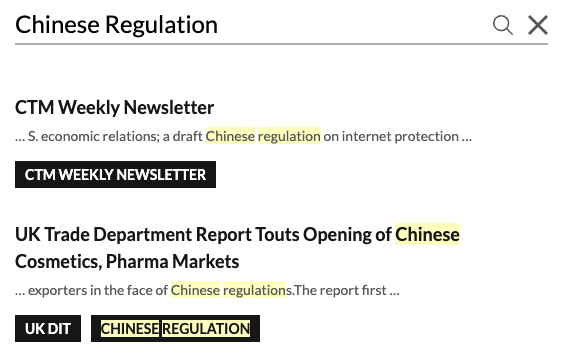Following an EU request for China to provide more information about judicial decisions and regulations related to patents, China has now provided a response. However, it does not seem to directly address all of the EU questions, and the EU may press China again on these points going forward.
As we reported in early July, pursuant to Article 63.3 of the TRIPS Agreement, the EU asked China about "a number of recent judicial decisions and regulations relating to patents," noting that "in four court cases decisions were taken relating to application for and enforcement of injunctions in relation to standard essential patents." According to the EU, it had only been able to find the first case online, and said it "would like to request China to clarify if and where the decisions in the other three cases can be found and provide these."
In addition to asking about the text of the three court decisions, the EU raised the following issues: the status of "big" and "typical" cases in the Supreme People's Court; the status of the Supreme People's Court IP Tribunal adjudication guidelines; the status and role of "act preservation measures" in intellectual property disputes; the court’s "jurisdiction to set worldwide license rates” in OPPO v Sharp; and the scope of anti-suit injunctions.
In a communication (IP/C/W/683) dated September 7, China has now responded with the following:
...
2. China has taken note of the request for information by the European Union pursuant to Article 63.3 of the TRIPS Agreement. Despite the fact that there is no such obligation under the TRIPS Agreement for China to respond, China still has made its best efforts to provide the following information in the spirit of good faith, cooperation and transparency.
3. With a view to implementing the open trial principle, promoting judicial justice and improving judicial credibility, the Supreme People's Court of China promulgated the Provisions on the Publication of Judgments on the Internet by the People's Courts in July 2016, which prescribes the types of documents and publication time on the "China Judgments Online". The Provisions can be found at the following website: http://www.court.gov.cn/fabu-xiangqing-25321.html.
4. It should be pointed out that the "typical" cases, "typical technology cases" and "big" cases mentioned in the EU communication are cases for reference and have no legal effect of general application. These cases and adjudication guidelines extracted from these cases serve to timely summarize the trial experiences, strengthen publicity of the rule of law and provide references for judicial practices and legal education.
5. China and the European Union have established the China-EU IP Working Group, and China stands ready to have further discussions through such existing bilateral channel.
On his China IPR blog, Mark Cohen has posted some reactions to the Chinese response.
First, Cohen notes that the Chinese response "repeats the position taken by China in 2006, that Article 63.3 only affords an opportunity for a member to make a transparency request of another member" and asserts that "there is no such obligation under the TRIPS Agreement for China to respond." On this point, Cohen argues that: "The Chinese responses might be understood as rejecting a teleological interpretation of the TRIPS Agreement to effectuate its purposes, or one based on the good faith of the parties, as it is difficult to conceive of the reason for a treaty provision that offers an opportunity to make an inquiry of another country, but does not require that country to respond."
On this issue, we note that the text of Article 63.3 states:
Each Member shall be prepared to supply, in response to a written request from another Member, information of the sort referred to in paragraph 1. A Member, having reason to believe that a specific judicial decision or administrative ruling or bilateral agreement in the area of intellectual property rights affects its rights under this Agreement, may also request in writing to be given access to or be informed in sufficient detail of such specific judicial decisions or administrative rulings or bilateral agreements.
This language may be difficult to enforce, but there is a good argument that the first sentence in particular requires ("shall be prepared to supply") a response by the Member of whom information has been requested.
Cohen then talks about the term "general application," noting that the Chinese view is that the various types of cases “mentioned in the EU communication are cases for reference and have no legal effect of general application." But Cohen points out that China identifies the function of the cases sought by the EU as "summarizing trial experiences, strengthening publicity of the rule of law and providing references for judicial practices and legal education," which, he says, "should satisfy the test of what constitutes 'general application', i.e., application beyond the parties in suit."
More broadly, he notes that "the Chinese typology of different types of reference cases is complicated, and may involve different levels of internal review and consequential impact." In his view, "whatever the distinction among these various types of reference cases, all of these cases offer useful reference points in considering similar cases whether or not they might be cited in a legal brief, a court opinion, an oral argument, considered in judicial deliberations, or reviewed by the general public when it considers the legal implications of a course of conduct."
Finally, Cohen expresses surprise that the United States has not publicly supported the EU’s position regarding publication of cases by China. On this issue, we note that the Biden administration is in the midst of a review of its overall trade policy towards China, so it is still possible we will see the United States weigh in on this at some point.

